Pleyel, Ignaz: String Quintet in F minor (Benton 277) (AE637) – sheet music
Previous Product Next Product
Description |
Pleyel, Ignaz (1757-1831)
|
||||||||||||||||||
Details |
The string quintet, like the trio for violin, viola and violoncello, was not a popular medium in Vienna in the middle decades of the 18th Century. The origin of Ignaz Pleyel’s interest in the quintet is unclear and it seems more likely that Pleyel’s interest in the quintet was spurred by his experiences elsewhere. The present work is one of fifteen quintets composed by Pleyel between the years 1785 and 1789. Ignaz Pleyel revels in juxtaposing strongly-contrasting melodic ideas and interpolating new themes for his sets of quintets. Pleyel’s third published set of string quintets (Benton 277 –279) followed the pattern established in the earlier sets with the inclusion of a minor-key work. The work in question, the Quintet in F minor (Benton 277), is one of the works that we know was composed by 1786. His fascination with the textural clarity and simplicity of Italian music has been noted in connection with his string quartets and the quintets pursue a similar stylistic path. Extended solo passages are given to each member of the ensemble and these are underpinned by the simplest and most transparent of accompaniments. One of the striking features of the quintets is that the violins and violas are frequently deployed in pairs which creates interesting possibilities for antiphonal effects along with a denser texture in the middle of the ensemble. Another feature is that the violoncello is generally employed either in its traditional bass-line role or as a solo instrument: it is rarely coupled with another instrument in its extended solos. This set of quintets shows that Ignaz Pleyel’s works tend to be thematically dense rather than motivically dense. The most interesting textual conundrum across the thirteen extant string quintets concerns Benton 277. Although at the time of writing, it has not been possible to examine every significant source for this work, comparisons between the editions of Artaria and Imbault reveal significant enough differences to justify describing them as two distinct versions of the same work.Given Pleyel’s recent business dealings with Imbault, it is tempting to believe that his text may have been acquired directly from the composer. If that were the case, it would certainly establish its authenticity. However, Artaria’s edition of the quintet is significantly different to Imbault’s and is the more compelling, particularly in its reworking of the second movement, which argues strongly that it represents the final version of the work. André’s two editions of the work follow Artaria’s text. Since the first of these predates Imbault’s edition, this is perhaps unsurprising but it does raise further questions about the origin of Imbault’s engraving copy. The revision of Benton 277 differs in two important respects from that seen in Pleyel’s reworking of the Violin Concerto in D, Benton 103. The alterations made to the first movement of the quintet represent refinements of detail rather than of its overall musical structure. There is no appreciable change in the length of the movement or its internal proportions, but the revision considerably strengthens the movement particularly at its close. Unlike Benton 103A, which has an entirely new finale, both versions of Benton 277 utilize the same unrevised movement. Pleyel’s approach to the revision of the second movement, however, is strikingly similar to that he employed in the Violin Concerto. The revision is based closely on the thematic material of the original in its opening phrases but once beyond that point, the movement unfolds in a strikingly different manner. There is no obvious reason why Pleyel chose to revise the F-minor quintet, yet the later version subtly reflects its composer’s experience of working in the medium which suggests that the two versions may be separated from each other by a period of a year or two. |
||||||||||||||||||
Score Preview |




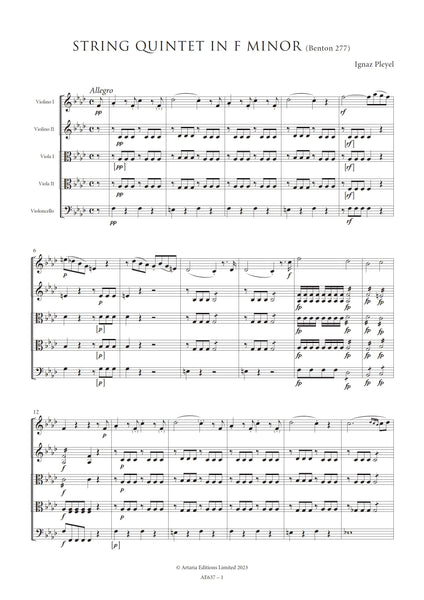
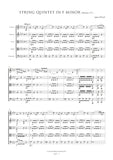
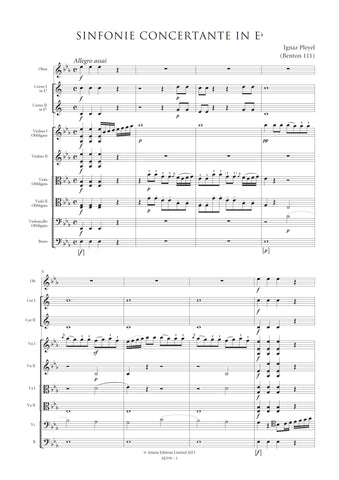

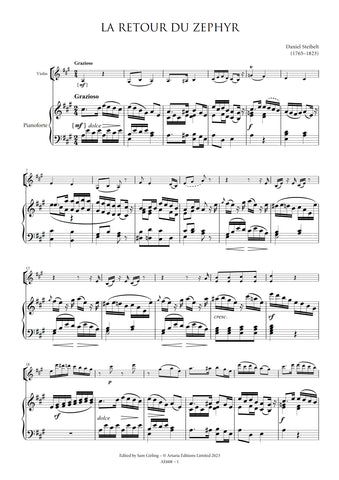
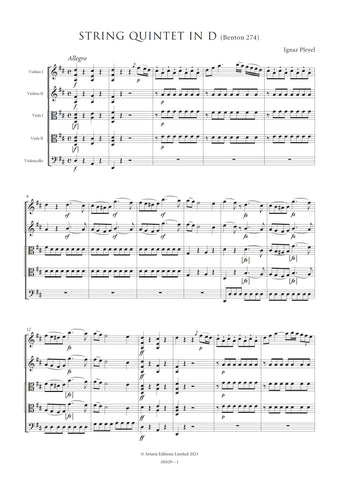
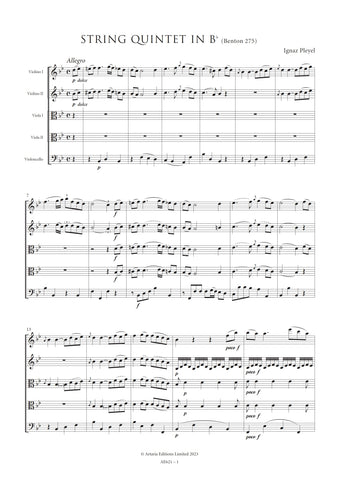
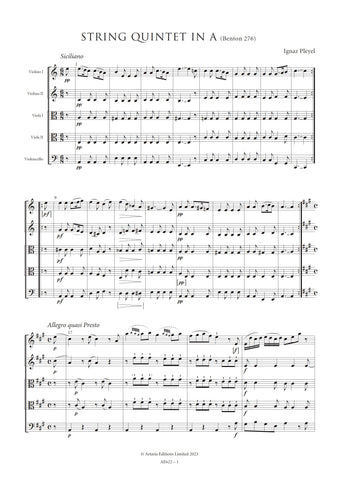
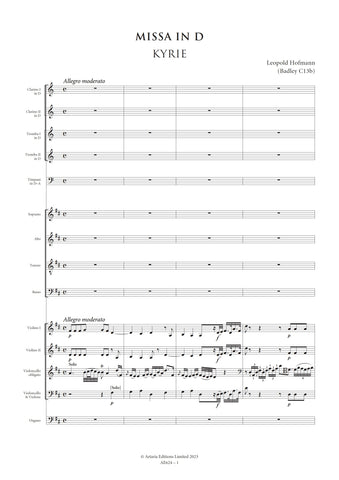
![Hofmann, Leopold: Missa in D (Badley C13b) [Vocal Score] (AE624/VS)](http://www.artaria.com/cdn/shop/files/ae624vs_1stpage_large.jpg?v=1697794050)
![Hofmann, Leopold: Missa Sancti Erasmi (Badley D4a) [Vocal Score] (AE642/VS)](http://www.artaria.com/cdn/shop/files/ae642vs_1stpage_large.jpg?v=1697798128)